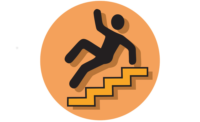Explaining typical hand injuries

We take our hands and fingers for granted – right up until we lose them
We have 10 fingers, and it might seem that losing just one isn’t a big deal, but such an injury can have severe, lifelong consequences.
Below is a list of the most common types of hand injuries:
Cuts: Human skin is thin and sharp edges are everywhere. That makes cuts the overwhelming No. 1 issue on the list of hand injuries. Cuts can be minor or deep, cutting through ligaments, veins or whole fingers.
Pinch points: Tools and equipment — especially moving machinery — create tight spaces that crush, twist and tear whole hands.
Lost fingers: This issue is common around rotating equipment and in food processing.
Impacts and crushings: These injuries are a result of tools, machinery or materials smacking down — usually on the top of the hand. These injuries are a major — if an often-overlooked — danger to working hands. They are especially common in construction, as well as oil and gas work, where people are handling big wrenches, pipes and equipment.
Abrasions: Even if they don’t catch a finger or a hand, moving parts like gears and lathes can abrade and tear at skin.
Repetitive injuries: Repetitive tasks can cause injuries like carpal tunnel syndrome. These injuries are some of the most insidious because they go unnoticed as they develop slowly.
Heat: Welding torches, foundry metals, plastics molding and the hot moving parts of machines can burn deeply.
Cold: Cold temperatures can cause frostbite, which can cause nerve damage requiring amputation in severe cases.
Chemicals: Like lubricating oils and metal-handling fluids of all kinds, chemicals can burn you immediately or cause serious conditions like cancer with long-term exposure.
Electricity: Electricity can kill.
Vibration: One common injury often overlooked by safety managers is hand-arm vibration syndrome (HAVS), a condition that affects hands working with pneumatic tools like jackhammers or vibrating machinery-like grinders. HAVS can cause neurological disorders, even vascular and skeletal problems. With HAVS, you get white fingers and you lose feeling.
There is one
There is one obvious way to protect against these hand injuries — gloves.
You can get gloves with cut, abrasion, puncture or impact resistance. You can get gloves that mitigate the effects of vibration. You can get gloves that protect from heat and against various chemicals.
Invest in the proper gloves for your workers now and start saving some hands.
Joe Geng is the author of “Rethinking Hand Safety” and vice-president of Superior Glove in Acton, Ont.
Source: www.ohscanada.com
Looking for a reprint of this article?
From high-res PDFs to custom plaques, order your copy today!









